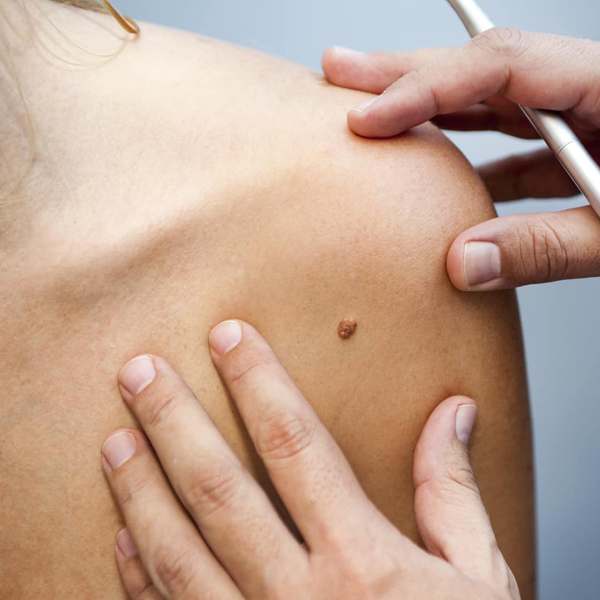Fact: A full-body strength workout doesn’t need to be overly long or filled with complicated exercises in order to be effective. This four-move, total-body routine proves you can hit every major muscle group without spending hours in the gym doing a million different exercises.
“I’m a huge believer in the minimum effective dose,” ACE-certified personal trainer Sivan Fagan, C.P.T., owner of Strong With Sivan, tells SELF. That means focusing on the quality of a workout rather than the quantity as a way to get the most bang-for-your-exercise-buck and progress towards your goals.
Focusing on quality is really about having good form and giving your best effort, no matter how long your workout is. With this approach, you can get super solid results while saving yourself time and energy and reducing your risk of injury, says Fagan.
One easy way to get a quick-yet-effective total-body workout? Incorporate compound movements, which are exercises that involve multiple joints and stimulate large muscle groups. Compared to isolation movements, which target just one muscle, compound movements are a great choice for getting a lot done in a short period of time. And if you pick compound exercises that follow the four major movement patterns—hinging, squatting, pressing, and pulling—your workout becomes that much more efficient and functional.
Including unilateral exercises is another solid way to get the most from a workout when you want to keep it simple. Unilateral exercises require you to rely on the strength of just one limb to perform a movement, which means they often feel more intense than bilateral moves (moves done with two limbs). And because unilateral work demands balance, your core has to fire more too, in order to keep you stable and resist bending or rotating, as SELF previously reported.
The following four-move dumbbell workout, which Fagan created for SELF, checks all of these boxes. It hits the major movement patterns with compound moves and incorporates lots of unilateral work too, so you can smoke every major muscle group in your body in a short amount of time.
Depending on your fitness level, you can do this routine two to three times a week, either as a standalone routine or as part of a larger workout. One easy way to add it to a larger workout? Combine it with some shorter core and/or shoulder work, says Fagan (though you certainly don’t need to add on; this is a super-solid workout by itself). However you choose to do this routine, make sure to pencil in enough rest in between sessions so your muscles have enough time to recover—scheduling at least 48 hours of downtime is a good general rule of thumb.
Also important: Before jumping into this routine, do a quick warm-up to mobilize your joints and activate your muscles. Several minutes of moves like pull-aparts, arm swings, squats, and striders can do the trick, says Fagan. (You can also try this five-minute dynamic warm-up here.)
Then, when doing the actual workout, be sure to give it your
.jpg)

 Joe BidenBiden administration takes aim at methane emissions McConnell blasts potential payments to separated migrant families Poll: 50 percent of Republicans don’t believe their vote will be counted accurately MORE
Joe BidenBiden administration takes aim at methane emissions McConnell blasts potential payments to separated migrant families Poll: 50 percent of Republicans don’t believe their vote will be counted accurately MORE Joe ManchinOn The Money — Presented by Citi — Progressives shrug off Manchin warning Cori Bush rips Manchin on spending bill opposition: ‘Anti-Black, anti-child, anti-woman and anti-immigrant’ Overnight Energy & Environment — Presented by The American Petroleum Institute — Glasgow summit kicks off MORE
Joe ManchinOn The Money — Presented by Citi — Progressives shrug off Manchin warning Cori Bush rips Manchin on spending bill opposition: ‘Anti-Black, anti-child, anti-woman and anti-immigrant’ Overnight Energy & Environment — Presented by The American Petroleum Institute — Glasgow summit kicks off MORE Raphael WarnockBiden reconciliation framework includes Medicaid workaround, no Medicare dental or vision benefits Senate GOP lines up behind Trump-backed candidates Perdue mulling primary challenge against Kemp in Georgia: report MORE
Raphael WarnockBiden reconciliation framework includes Medicaid workaround, no Medicare dental or vision benefits Senate GOP lines up behind Trump-backed candidates Perdue mulling primary challenge against Kemp in Georgia: report MORE Jon OssoffBiden reconciliation framework includes Medicaid workaround, no Medicare dental or vision benefits Perdue mulling primary challenge against Kemp in Georgia: report McConnell backs Herschel Walker in Georgia Senate race MORE
Jon OssoffBiden reconciliation framework includes Medicaid workaround, no Medicare dental or vision benefits Perdue mulling primary challenge against Kemp in Georgia: report McConnell backs Herschel Walker in Georgia Senate race MORE Bernie SandersSanders hits back at Manchin’s spending concerns Manchin frustrates Democrats with latest outburst Democrats race to reach deal on prescription drug pricing MORE
Bernie SandersSanders hits back at Manchin’s spending concerns Manchin frustrates Democrats with latest outburst Democrats race to reach deal on prescription drug pricing MORE/https://specials-images.forbesimg.com/imageserve/617ad5be9b42d1b2f5df4cb7/0x0.jpg)






